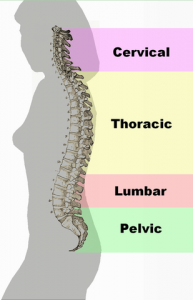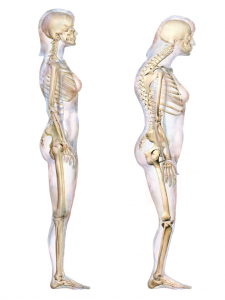Do you have hyperkyphosis? You probably know it as hunchback. If your spine is curving more than it has in the past, you’re probably chalking it up to aging. But who wants to look old? Let’s tackle that hunchback posture with some physical therapy before it gets worse.
Treating and preventing hunchback posture
If the mirror tells you that you may be suffering from hyperkyphosis, a trained physical therapist has the tools to evaluate your condition and may refer you to a specialist. Medication can ease pain from the hunchback posture, and in some cases surgery may be recommended.
At Heather Lane Physical Therapy, following the evaluation we design and implement either a treatment regimen or a preventative strategy—whichever is appropriate for your specific needs. In the three videos below, Heather Lane’s Dr. Patrick Donovan demonstrates three stretches you can do at home to fight hunchback. Make an appointment to learn more about treating and preventing your curving spine.
All Fours Mid-Back Stretch
Door Stretch
Active Hip Extension
The spine and its role in general health
The spine comprises three regions: cervical, thoracic and lumbar. While each region has a natural curve, it’s the middle portion—the thoracic, which includes your ribs and chest plate—that curves outward. This outward curving is called kyphosis, and when it becomes more extreme the condition is called hyperkyphosis.
As you age, it’s common to develop this exaggerated hunch in the thoracic spine area. The hunch shifts your head a bit forward from your shoulders, and hyperkyphosis is further associated with issues such as low bone mass, vertebral compression fractures and degenerative disc disease. If you let it go untreated, you may have difficulty performing ordinary tasks such as bathing, getting up from a chair, bending and walking.
A hunchback posture impairs healthy movement because it can:
- Impede the ability to stand erect and maintain normal spinal alignment
- Worsen problems with vision
- Exacerbate neck stiffness
- Interfere with proper shoulder function
Further, hyperkyphosis increases the risk of falls and fractures. Older women with hyperkyphosis have a 70% increased risk of fracture, and that risk rises as the condition progresses. Hunchback raises the risk of falls because it:
- Significantly diminishes balance
- Slows walking speed
- Decreases stair-climbing efficiency
Stand up straight
We all want a youthful appearance, and posture is key to that. If you’re a little bent over, start a treatment plan as soon as you can. If you’re still standing straight but have parents or grandparents who had that hyperkyphosis look, don’t just accept your genetic fate. There’s lots we can do to fight hunchback before it even shows up.



